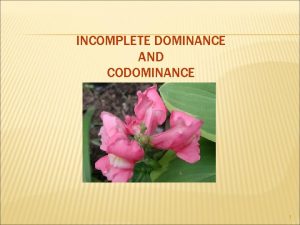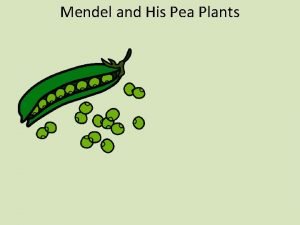Phenotypic genotypic and proteomic characterization of J 774

- Slides: 1

Phenotypic, genotypic and proteomic characterization of J 774 macrophages upon chronic exposure to fluoroquinolone antibiotics B. Marquez 1, N. E. Caceres 1, M. Aerts 2, C. Vallet 1, M-P. Mingeot-Leclercq 1, P. M. Tulkens 1, Devreese 2, F. Van Bambeke 1 B. 1. Unité de Pharmacologie cellulaire et moléculaire, Université catholique de Louvain, Brussels, Belgium; 2. Laboratory for Protein Biochemistry & Biomolecular Engineering, Ghent University, Ghent, Belgium. P 4 - 84 Mailing address: F. Van Bambeke, Unité de Pharmacologie cellulaire et moléculaire, UCL 73. 70 av. Mounier 73, 1200 Brussels – Belgium; francoise. vanbambeke@uclouvain. be INTRODUCTION RESULTS Active efflux is a well known mechanism of resistance to chemotherapy. Overexpression of multidrug transporters can indeed be selected through exposure to sublethal concentrations of drugs substrates. We have shown that the fluoroquinolone ciprofloxacin (CIP) is substrate for Abcc 4 (a multidrug ABC transporter, belonging to the MRP subfamily) in J 774 macrophages [1] while a closely-related but more lipophilic molecule, moxifloxacin (MXF), is not affected [2]. Our aim was to compare the changes in phenotype, gene expression and membrane proteome induced in J 774 macrophages by exposure to a drug efflux pump substrate (CIP) or to a non-substrate (MXF). For this purpose, J 774 cells were exposed to increasing concentrations of either CIP or MXF. We studied the resulting cells lines in comparison with wild-type (WT) cells. Effects of fluoroquinolone exposure on cell phenotype and multidrug transporters expression Fluoroquinolone accumulation and efflux Multidrug transporters expression: Abcc 2 and Abcc 4 m. RNA expression ratio* Abcc 2 Abcc 4 1 1 9. 25 14. 59 Cell type WT CIP-resistant MXF-resistant 5. 09 -1. 82 * as determined by real-time PCR. Western-blot from whole cell lysates µg/well CIP MXF Statistical analysis (one-way ANOVA, Tukey post-hoc test): different letters indicate significantly different values with p<0. 05 CONCLUSIONS Expression of the CIP transporter Abcc 4 is differentially affected upon fluoroquinolone long- term exposure: - exposure to CIP leads to its overexpression, which is responsible for a lower accumulation and faster efflux of CIP than in WT cells; - exposure to MXF leads to a reduction of the Abcc 4 protein expression that accounts for a higher accumulation and a slower efflux of CIP (the rather small reduction at the m. RNA level suggests that post-transcriptional mechanisms might be involved). On the contrary, Abcc 2 expression is equally affected by both fluoroquinolones (increase of expression), suggesting independant regulatory mechanisms for both efflux pumps. Moreover, CIP exposure induces changes in expression of membrane proteins, involved in different pathways, which might account for an adaptative response to the antibiotic pressure. Long-term exposure to fluoroquinolones modulates proteins expression, among which Abcc 4, the CIP transporter, plays a major role in phenotype, but other (membrane) proteins might be involved in resistance. Cell type 50 MXF-resistant 50 Abcc 2 CIP efflux T 1/2 (min) control + gemfibrozil WT CIP-resistant 1. 25 – 1. 75 0. 09 4. 49 4. 35 MXF-resistant 3. 41 nd WT µg/well CIP-resistant 20 5 MXF-resistant 10 20 40 Abcc 4 Actin Changes in CIP accumulation and efflux rate are due to variations in Abcc 4 expression between cell lines. MXF accumulation is not affected by Abcc 4 expression level. Effects of ciprofloxacin exposure on membrane proteome Among 735 identified proteins, 25 proteins showed a higher expression and 26 proteins, a lower expression in CIP-resistant macrophages as compared to WT cells ( ~ 7% of proteins with a change in expression). 10 most over-expressed proteins in CIP-resistant cells versus WT cells Western-blot from membrane proteins WT µg/well 25 CIP-resistant 50 10 25 50 Dnaj. C 3 Prohibitin 10 most lower expressed proteins in CIP-resistant cells versus WT cells WT µg/well 25 50 CIP-resistant 25 50 Tlr 7 Changes in proteins expression detected with the SILAC Ge. LC-MS/MS experiment were validated by WB (Abcc 4, Dnaj. C 3, Tlr 7). REFERENCES [1] Marquez et al. (2009) Identification of the efflux transporter of the fluoroquinolone antibiotic ciprofloxacin in murine macrophages: studies with ciprofloxacin -resistant cells. Antimicrob. Agents Chemother. 53: 2410 -2416. [2] Michot et al. (2005) Influence of efflux transporters on the accumulation and efflux of four quinolones (ciprofloxacin, levofloxacin, garenoxacin, and moxifloxacin) in J 774 macrophages. Antimicrob. Agents Chemother. 49: 2429 -2437. [3] Michot et al. (2006) Cellular accumulation and activity of quinolones in ciprofloxacin-resistant J 774 macrophages. Antimicrob. Agents Chemother. 50: 1689 -1695. [4] Oyadomari et al. (2006) Cotranslocational degradation protects the stressed endoplasmic reticulum from protein overload. Cell 126: 727 -739. Acknowledgments We thank Eric Jacquet (Institut de Chimie des Substances Naturelles, Gif-sur-Yvette, France) for communicating us unpublished results about ABC transporters expression assessed by Taq. Man low-density array in J 774 macrophages, D. Ron (Skirball Institute of Biomolecular Medicine, New York University School of Medicine, New York, USA) for the kind gift of the anti-mouse Dnajc 3 serum. This research was supported by the Fonds de la Recherche Scientifique Médicale (grants no. 3. 4. 542. 02, 3. 4. 639. 04, 3. 4. 597. 06, and 3. 4. 583. 08), the Fonds de la Recherche Scientifique (grant no. 1. 5. 195. 07), the Belgian Federal Science Policy Office (Research project P 5/33 [research action P 5] and P 6/19 [research action P 6]), and a grant-in-aid from the Association Mucoviscidose: ABCF. CIP-resistant 50 Actin MATERIALS & METHODS Cells: we used wild-type J 774 murine macrophages (WT), and CIP- and MXF-resistant cells obtained by long-term exposure to CIP (0. 1 m. M to 0. 2 m. M) [3] or MXF (0. 1 m. M to 0. 18 m. M) respectively. Fluoroquinolone accumulation & efflux: cells were incubated for 2 h at 37°C with 20 µg/ml of CIP or MXF, in the absence or presence of a MRP inhibitor, gemfibrozil (500 µM), then collected to measure the cell drug content by fluorimetry. For each sample, cell drug content was expressed by reference to its total protein content [1 -3]. For CIP efflux, cells were incubated for 2 h at 37°C with 20 µg/ml of CIP, alone for WT and MXF-resistant cells, and with 200 µM gemfibrozil for CIP-resistant cells, transferred to CIP-free medium, reincubated for up to 30 min at 37°C and collected at various time points. Results are expressed as the percentage of the CIP cell content measured before transfer to CIP-free medium. Real time PCR: ABC transporters m. RNA expression was quantified by Taq. Man Low Density Array on a 7900 HT Fast Real-Time PCR System (Applied Biosystems). Samples have been tested in duplicate from two biological samples. Ten housekeeping genes have been tested and the two more stable (Gapdh and Gusb, as determined with Ge. Norm and Norm. Finder), were used to normalise gene expression as compared to WT cells. Western Blot: Abcc 2 and Abcc 4 proteins were detected in whole cell extracts from WT, CIP- and MXF-resistant macrophages, respectively with M 2 III-5 and M 4 I-10 monoclonal antibodies. Anti-actin polyclonal antibody was used as a control. Dnaj. C 3 and Tlr 7 were detected in membrane samples from WT and CIP-resistant macrophages with antiserum to mouse Dnaj. C 3 [4] and a polyclonal antibody to Tlr 7 (IMG-581 A); polyclonal antibody against prohibitin (H-80) was used as a control. SILAC-based Ge. LC-MS/MS-proteomic analysis: WT and CIP-resistant cells were grown respectively in media with 13 C 6 -Lys and 13 C 6 -Arg or 12 C 6 -Lys and 12 C 6 -Arg. Cells homogenates (Dounce B homogenizer, 25 strokes) were separated on a discontinous sucrose gradient (sucrose solutions with densities: 1. 10, 1. 13, 1. 15, 1. 17 and 1. 19) and ultracentrifuged. The resulted visible bands at interphases 1 or 2 from WT and CIP-resistant cells were collected, pooled at a 1: 1 ratio and separated by SDS-PAGE. In-Gel tryptic digests were submitted to LC-MS/MS analysis. Peptides were identified with the SEQUEST algorithm, and proteins were validated and quantified with tools from the Trans-Proteomic-Pipeline (TPP). WT Repartition of differentially expressed proteins according to their biological function in CIP-resistant versus WT cells. This poster will be available for download after the meeting at: http: //www. facm. ucl. ac. be/posters. htm CIP-resistant cells show complex modifications of their membrane proteome, with proteins involved in metabolism and regulatory pathways being the most affected.

